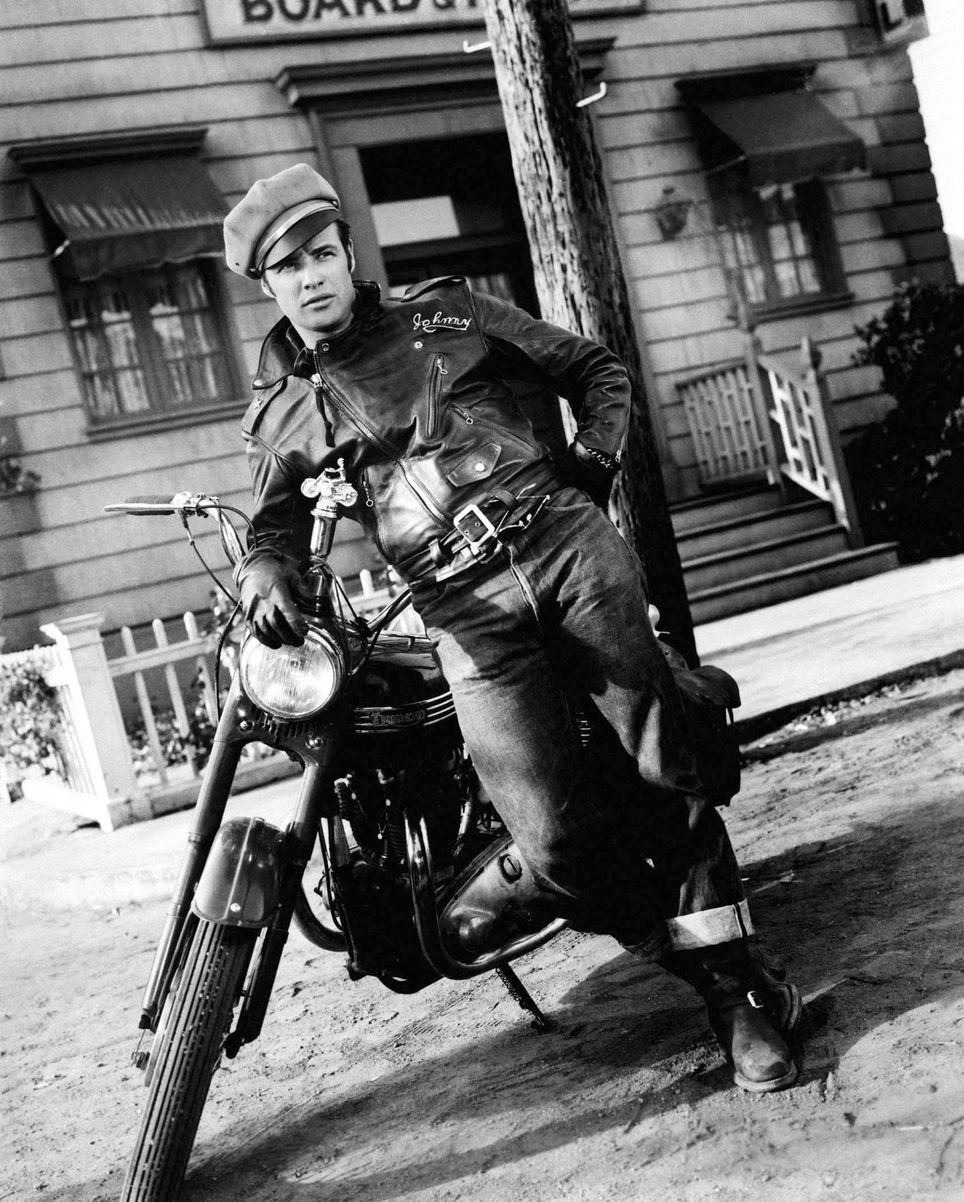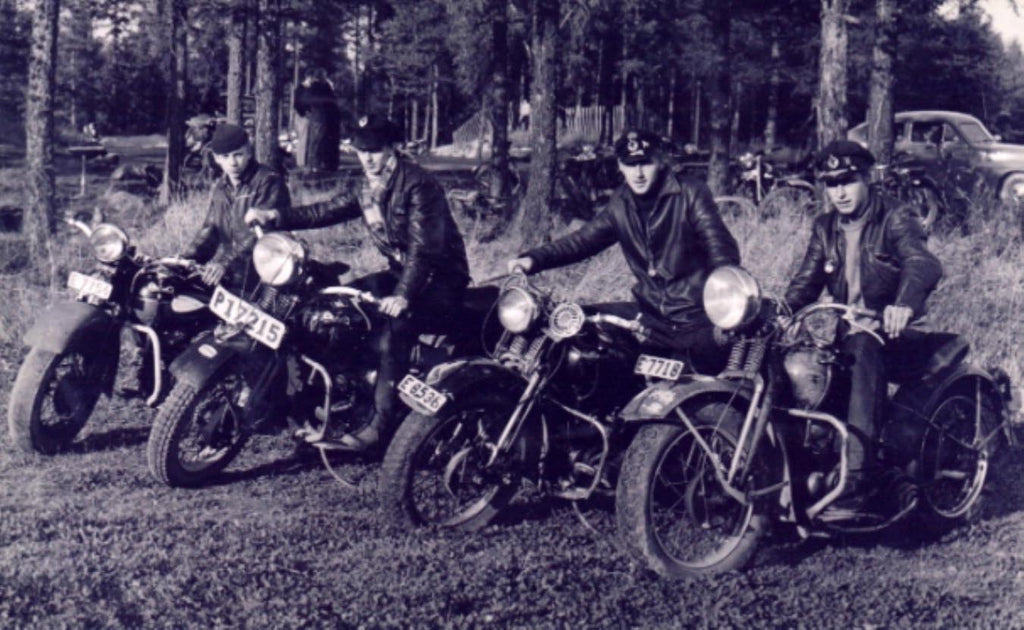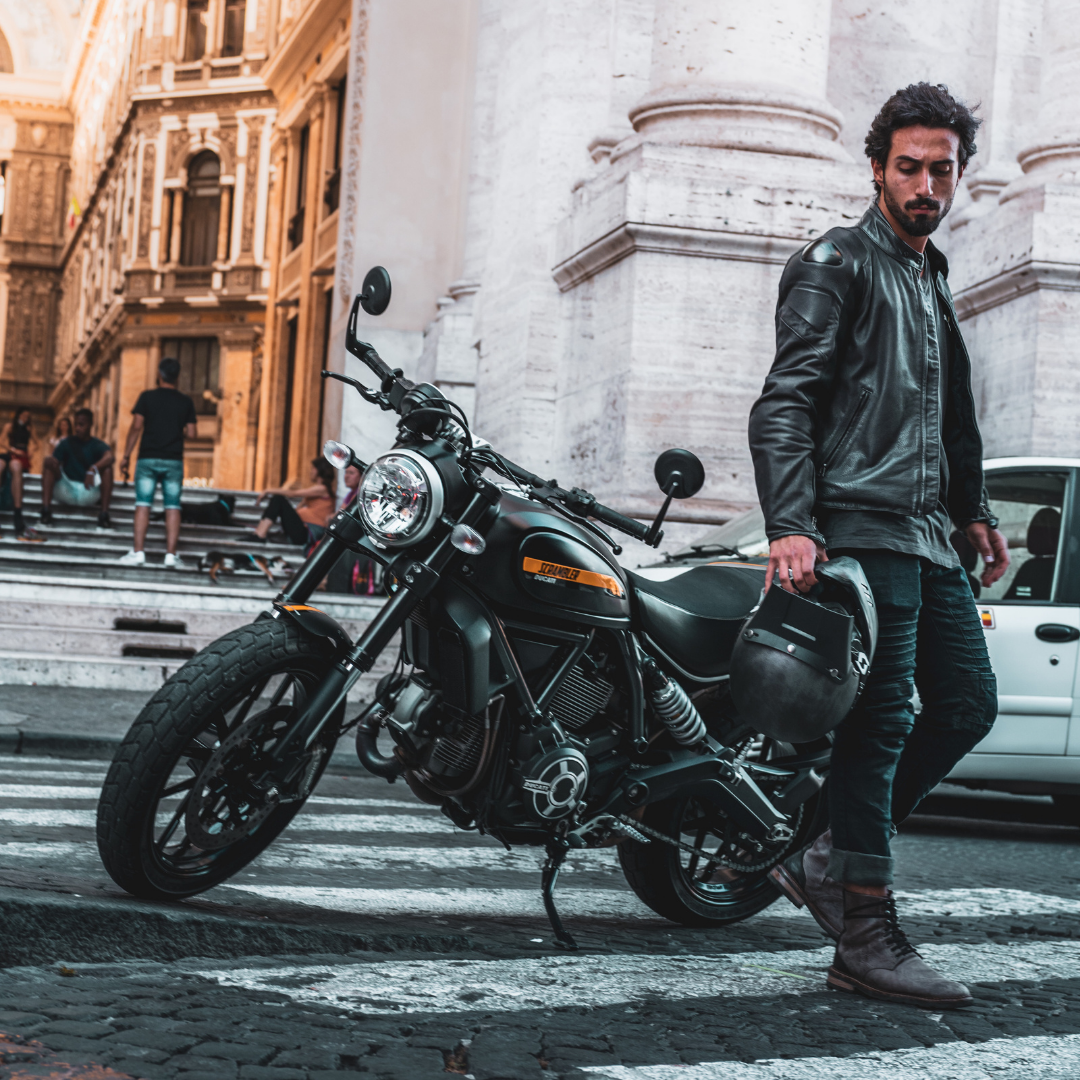
4 fascinating trends from motorcycle culture history.
The world of motorcycles, well, it is an art. From America, to Europe, to the far corners of Asia. All around the world we see different forms of two-wheel passion, each trend exploding with its own sense of identity and artistic expression.
You love motorcycles, therefore what better way to stay informed on everything motorcycle, as well as understand how our history affects who we are today?
That’s enough. Let’s take a look at 4 of the most fascinating trends in the history of motorcycle culture.
1. British Women and Motorcycles during the 1920’s
The United Kingdom motorcycle scene has always been at the frontline of our imaginations.
It is the birthplace of Triumph and Royal Enfield, and the world of café racer. It was key to shape the commercial motorcycle industry as we know it.
An often overlooked trend throughout the world of motorcycles, is the influence of women had on it. During the 1920’s, English marketers embarked on a massive campaign focused at increasing motorcycle sales amongst women. It was yet to be viewed as such a masculine hobby.
These marketers began a wildfire of initiatives inciting motorcycle use, sales and competition amongst women all over the UK.
Some of the most renowned woman pilots rose to fame during the era; Theresa Wallach, The Debenham sisters and Marjorie Cottle to name a few. In addition, lots of innovative product designs, literature, and promotions aimed towards women made their ways to the market.
Ever heard of the Ner-A-Car?

Image from 1920s motorcycle catalog featuring women riders and their Ner-A-Cars. Image source: https://thevintagent.com/2018/01/30/road-test-1923-ner-a-car/

Marjorie Cottle fixing her engine in the summer of 1926. Image source: https://cybermotorcycle.com/gallery/women/Marjorie-Cottle-1926-August.htm
However, the buzz around women riders in the 20’s and 30’s was short lived. Nearly ten years after the beginning of the campaign, motorcycle manufacturers announced that the campaign had been a failure.
Despite their best efforts, and a seemingly strong response from women riders across the UK, sales were depressingly low.
Historians later prescribed the lack of purchases among women, to increasingly volatile ideas about gender roles during the time. Men and other counterparts challenged woman’s changing role in society during the 1930’s. Women riding motorcycles was seen as anti-establishment.
Manufacturers for the next few centuries cut marketing efforts and design towards women almost entirely. Ironically, this played an adamant role during the infamous decline of the British motorcycle market in the 1970’s, due to the inability to compete with the new competitors entering the market.
2. The “Leather Lads” of Sweden
 Swedish Leather Lads posing for a picture. Image source: https://web.archive.org/web/20180424175724/http://ijms.nova.edu/March2007/Lagergren_Figure_6%20copy.jpg
Swedish Leather Lads posing for a picture. Image source: https://web.archive.org/web/20180424175724/http://ijms.nova.edu/March2007/Lagergren_Figure_6%20copy.jpg
Let's travel back in time. Imagine you are in Sweden, post WWII. Your country remains relatively unharmed by the horrors of the war. Your generous government also persists, that all citizens, including a young motorcycle lover like yourself, should be making a liveable wage. Therefore you have money in your pockets. And you want a motorcycle.
What could possibly happen next?
Well as, you might have imagined, a massive increase in motorcycle sales. The increase in income amongst the Swedish youth, came the same time of a booming demand for affordable motorcycles. These young riders used their money to purchase bikes instead of more expensive cars.
However, these young Swedish speed-lovers had an identity crisis. While, America had its “hot-rodders”, Britain its “Rockers and Mods”, and Germany and Austria their “Halb-starke”, Sweden had nothing to label this massive group of young riders.
Soon enough, a Swedish newspaper answered the call, dubbing this new group the skinnknutte, or in English, “Leather Lads”.
Thus, an identity was born.
You may see a striking resemblance to the rebel riders of the 1950s classic, The Wild One featuring Marlon Brando. But what was most interesting about the Leather Lad movement, was the difference in public opinion they had compared to other “rebel” biker movements.

Marlon Brando as Johnny Strabler in the 1953 classic, The Wild One. Image source: https://www.motorcyclecruiser.com/wild-one-marlon-brando/
According to the International Journal of Motorcycle Studies, “Instead of being branded as a moral and criminal problem for society, as for instance Raggare and Rockers were, the Leather Lad became a rebel of another kind: noisy and careless, but not a menace to society.”
They were more known for their passion for speed, and love for riding, rather than violence or crime common with others.
This idea of “motorcycle freaky” lasted for nearly a decade.
Do you know any modern day Leather Lads, or Leather Ladies?
3. The Bōsōzokus of Japan
The Bōsōzoku were founded by a group of post post-WWII kamikaze pilots who struggled to reincorporate into society. While this theme of post war rebelliousness is a common idea in the typical post-war biker image, the Bōsōzoku were quite different.
The below video gives you a good luck into the life and ideals of an Bōsōzoku; told by the legenday ex-Bōsōzoku riders, “Tigerman”.
"MOTORCYCLE BOY" The Legendary Tigerman from James F. Coton on Vimeo.
The Bōsōzoku were known for their lavish, highly modified bikes, and fighter pilot inspired uniforms. The most common modifications were heightened seats, elaborate paint jobs, shifted handlebars, and oversized fairings. The most typical however, was a shugo, a modified muffler with a single exhaust tube.
They would also participate in “runs”. In other words, drive through the streets in large groups, showing off their bikes and loud mufflers. “Getting loud”, was a common way to compete within the groups over the quality and sound of their bikes. What does it mean to get loud? Check out the video below (warning: check your volume).
Often the violence and illegal activity of the different biker groups overshadow the lessons to be learned from them. Perhaps one of the most fascinating observations of these different motorcycle sub-cultures, is how the motorcycle is used not just as a means of travel, but for expressing oneself as well.
If we stop and ask ourselves why these groups exist in the first place, the answers we find can be extremely interesting.
4. The MOTOBOYS of Brazil
Did you know that in São Paulo alone, more than 200,000 people use their motorcycles for work everyday?
This is the reality that has brought us what we know today, as the MOTOBOYS. The Motoboy phenomenon in Brazil, refers to the thousands of people that work as couriers, delivering goods throughout the city via motorycle. Many of which are self-employed.
As Brazil left military dictatorship behind, the return to democracy during the 1980’s led to massive economic growth. With outdated road systems, the cities were not prepared for the massive increase in movement and population that was brought to cities like São Paulo, leading to mass congestion and traffic. Motorcycles were able to weave in and out of traffic, though.
The video below might give you a better idea of what it's like driving on São Paulo's streets.
The dangers of being a Motoboy are very high. Every day, 2 Motoboys die in Sau Paulo. Until recently, the story of the Motoboys went untold. The book, Coletivo canal*MOTOBOY, by Antoni Abad, explains the creation of a culture. He aims to show the people behind the often stereotyped couriers of the São Paulo streets.
Antoni Abad shares individual stories regarding the dangers and joys experienced while riding/working. It shows how the Motoboys have even developed their language and slang regarding their experiences.
Again we see the motorcycle, not just as a vehicle for transportation, but as a means of expressing oneself. In this case, it is a reflection of a common suffering, and broader appreciation for the motorcycle world.
Antoni Abad puts it well, “In watching the motoboys riding the streets one can see crime, violence or disrespect for the laws. But it is also possible to see a new breath of workers’ independence, brotherhood, the freedom to make one’s own strategies and a love for motorcycles. The eventual vision of this very new profession will be governed by the way it grows. Projects like canal*MOTOBOY are trying to make it grow in a positive direction.”
Final Thoughts?
The motorcycle world is filled with trends. Moments, that will fade away, change, or maybe carry on forever. These stories offer a chance to learn and talk about the motorcyle passion we share with one another.
If there are any common themes amongst any of the above trends, there are 2 things that stand out most:
- The motorcycle can be a means of expressing ourselves. Whether individually or as a group
- The above groups are a result of their passion for motorcycles!
So if this is true, we leave with you with one final thought. What do you think will be the next big motorcycle trend of the future?
If you liked this article, don’t forget to enter your email at the bottom of this page, under join our club.
We post interesting stories like these all the time, plus we announce new products and exclusive online sales to those signed up, so don’t miss out!
Sources:
- https://haenfler.sites.grinnell.edu/subcultures-and-scenes/bosozoku/
- https://www.japantimes.co.jp/news/2016/12/13/national/social-issues/japans-bosozoku-bikers-a-vanishing-rebel-breed/
- https://web.archive.org/web/20180424010758/http://ijms.nova.edu/March2006/IJMS_Artcl.Boslaugh.html
- https://web.archive.org/web/20180424011047/http://ijms.nova.edu/March2007/IJMS_Artcl.Lagergren.html
- https://web.archive.org/web/20180424014051/http://ijms.nova.edu/Fall2011/IJMS_Rvw.MagnaniE.html



